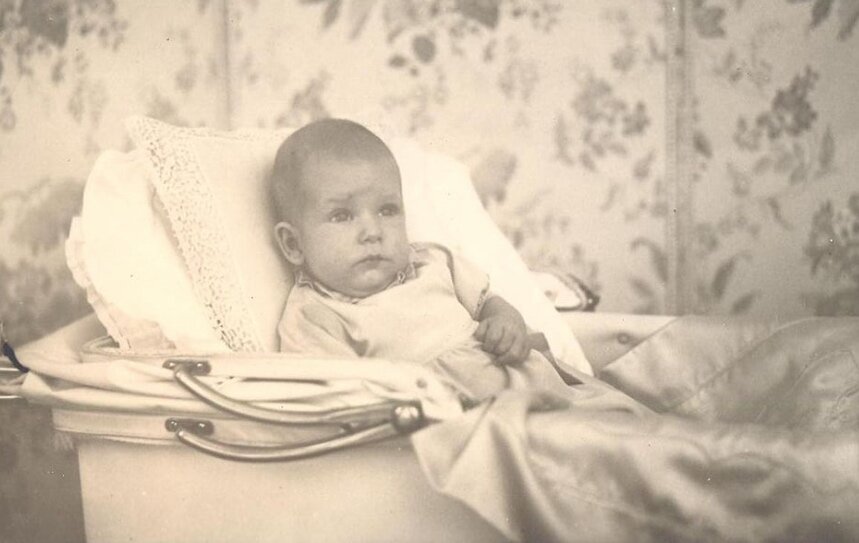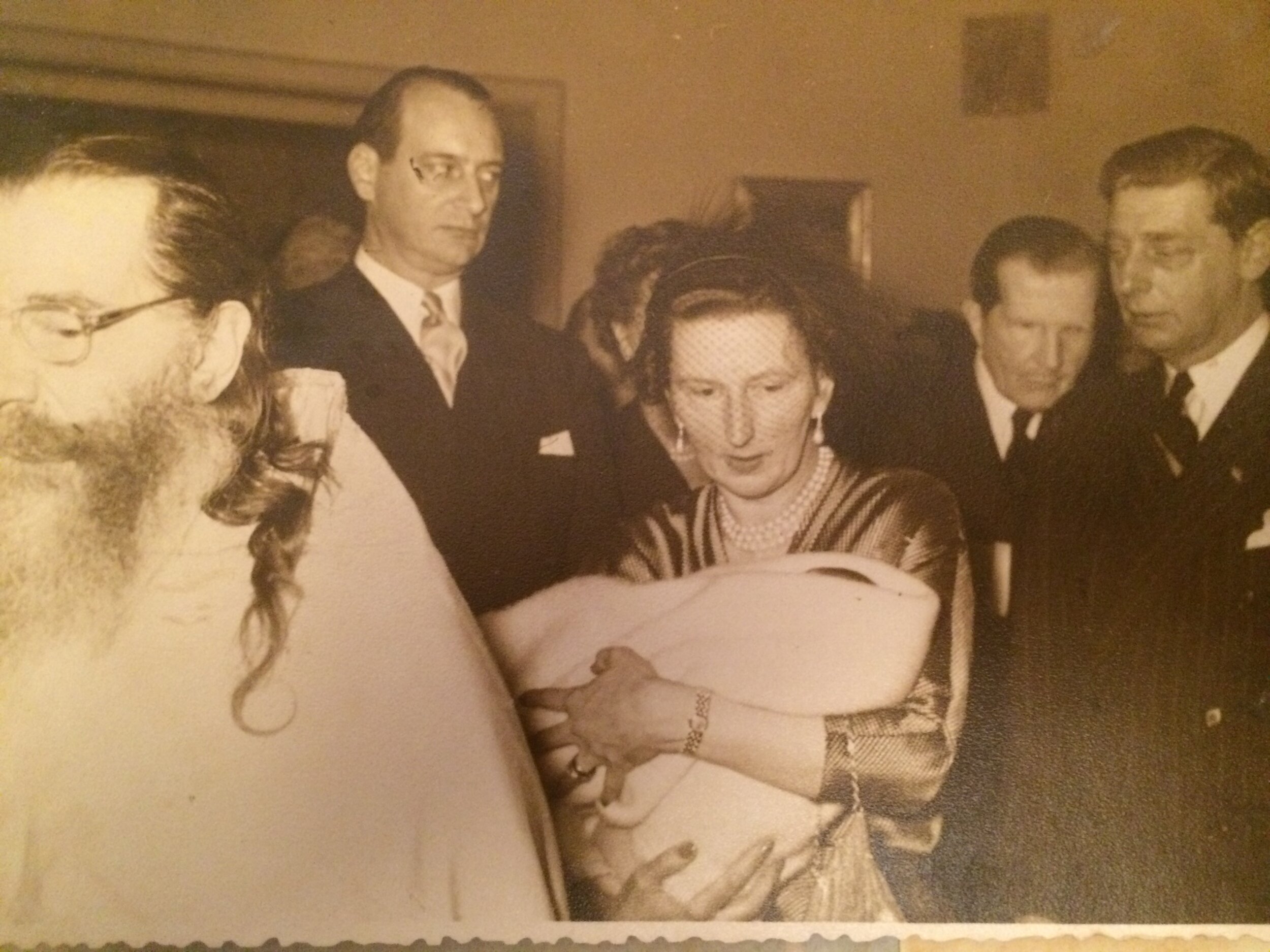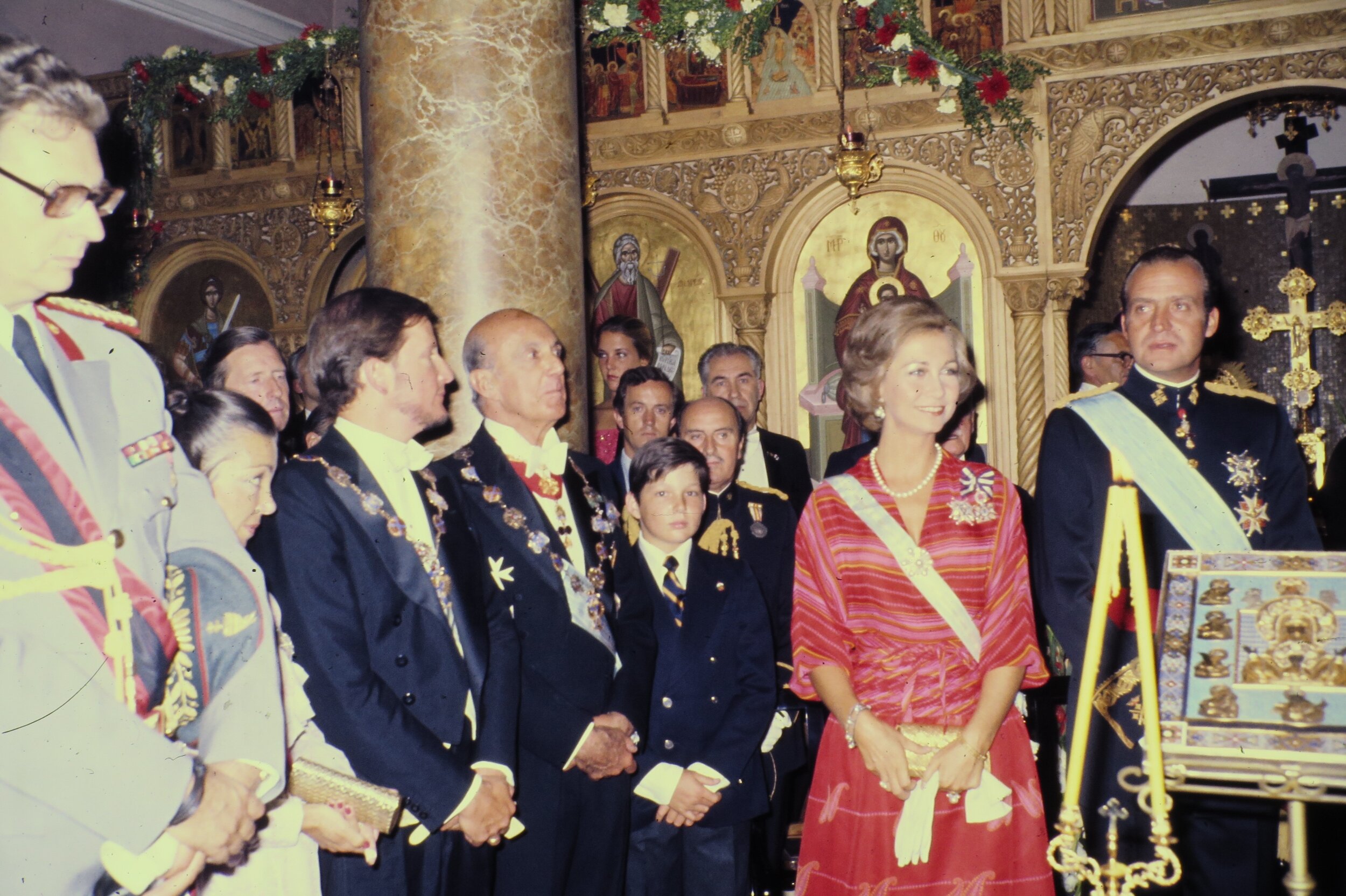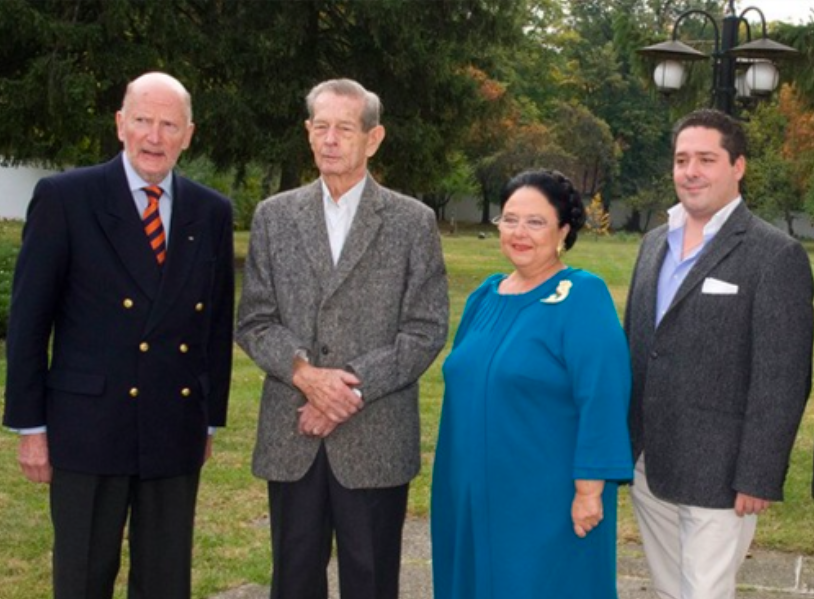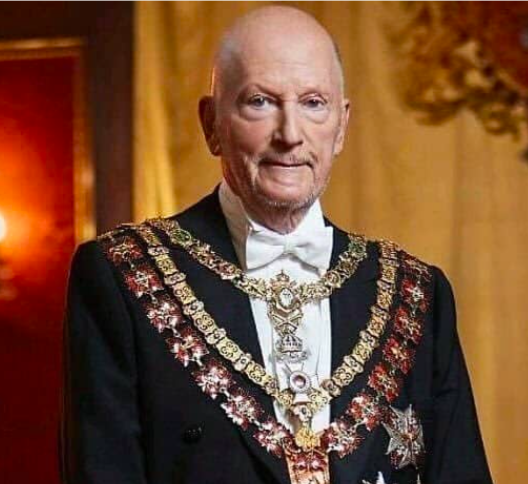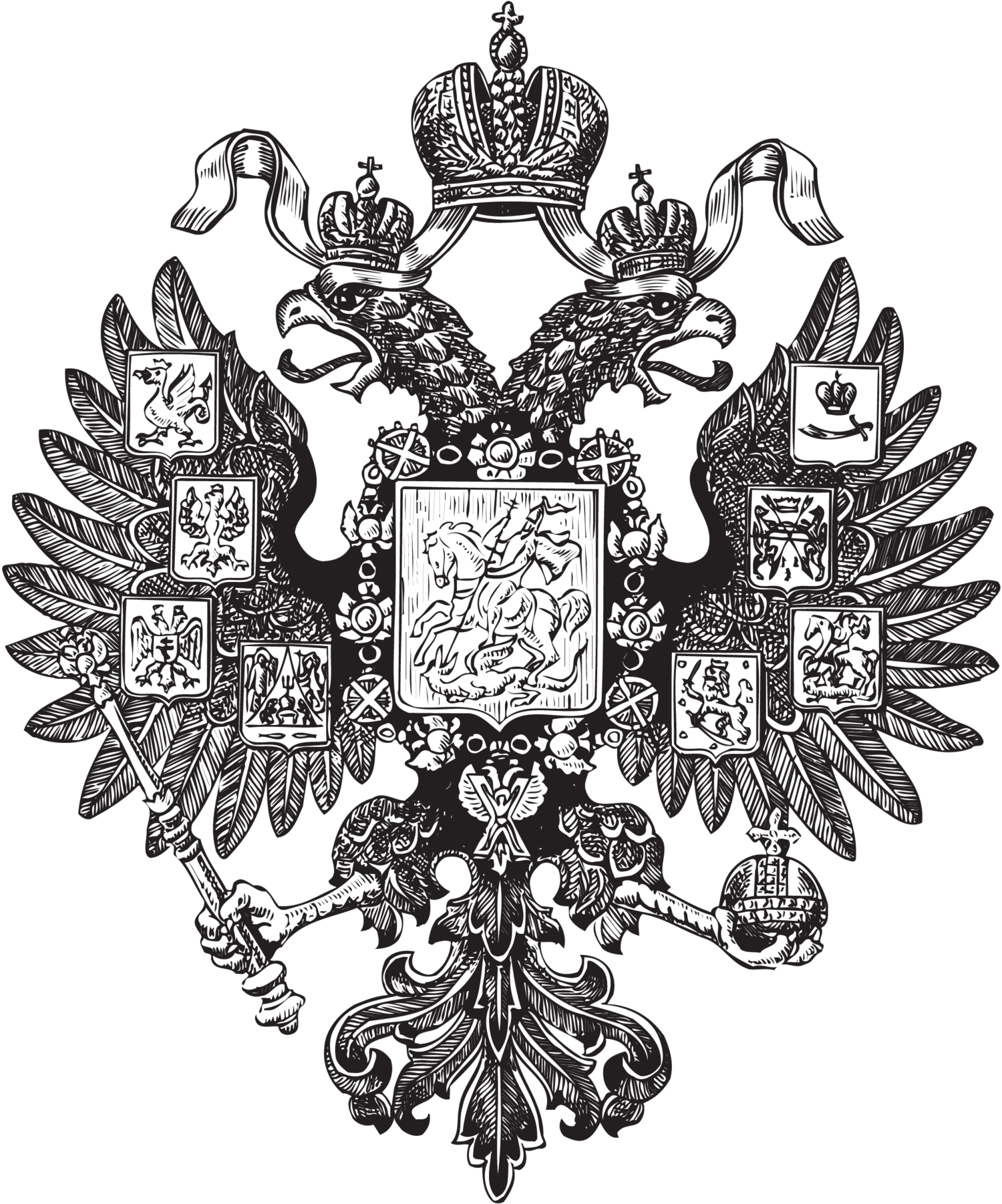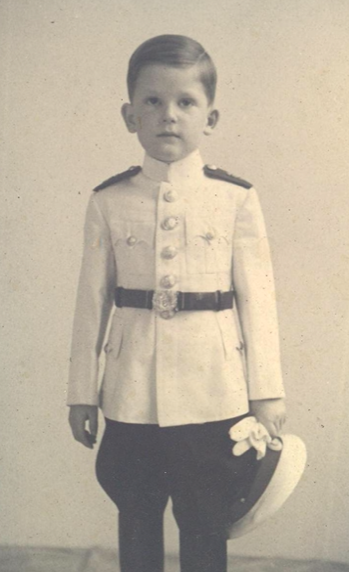THE RUSSIAN LEGITIMIST SALUTES
H.M. KING SIMEON II OF BULGARIA
August 2020 marks the 75th anniversary of the end of World War II, a catastrophe of world history which caused the deaths of an estimated 70 to 85 million people. Of these, it is estimated that some 27 million of the dead were soldiers and civilians from the lands of the former Russian Empire.
On this anniversary, The Russian Legitimist wishes to pay tribute to Europe’s last living head of state from the World War II period, His Majesty King Simeon II of Bulgaria.
Simeon II, King of the Bulgarians, Prince of Saxe Coburg and Gotha, and Duke of Saxony reigned as King, or Tsar, from 1943 until 1946, when the Communist regime abolished the monarchy. In addition to being the last living European head of state of the World War II period, His Majesty is the only living person to have reigned as an anointed Orthodox Tsar. Another “record” he holds is this: he is the only person in European history to have reigned as king and then later to have served as the freely elected head of the republican and parliamentary government of his country. He was Prime Minister of Bulgaria from 2001 to 2005.
As “Prime Minister Saxe-Coburg-Gotha”, His Majesty was responsible for the negotiation of Bulgaria’s successful push for entry into NATO and for starting to lay the groundwork for Bulgaria’s membership of the EU. In the run up to its NATO admission, Bulgaria clearly benefited from King
Simeon’s extensive contacts in the West – especially his excellent relations with his cousins reigning on the thrones of the United Kingdom, Spain, Belgium, Denmark, Norway and Luxemburg, all of which are NATO countries. Immediately prior to Bulgaria’s entry into NATO, King Simeon II, as Prime Minister, attended a formal meeting in which he answered questions from representatives of the NATO member countries. At this meeting, he set another record, by replying to questions in the language of the representative posing the question, whether in English, French, German, Italian, Spanish, or Portugese, languages he speaks fluently in addition to his native Bulgarian. In terms of domestic policy, his priorities were to foster national reconciliation, raise living standards, encourage entrepreneurship and individual business initiative, and to fight a culture of corruption that had taken root during the Communist period.
Some people foolishly asserted that King Simeon’s entry as a candidate in the 2001 parliamentary elections was part of a strategy on his part to restore the monarchy and resume his place on the throne. In fact, the opposite was true.
The King is a Bulgarian to his fingertips. Until the fall of Communism in the USSR and Eastern Europe, he was Bulgaria’s last legitimate head of state. He had worn the Crown which he inherited from his beloved father. He never abdicated. His duty to his country and to the dynasty he headed, as well as to the memory of his father, was to protect his rights to that Crown. In his excellent autobiography (the French edition, Siméon II de Bulgarie – Un destin singulier, was published by Flammarion in 2014), however, the King explained that he completely understood that his entry into partisan politics would put an end to any hope he might have, however remote, for a return to his throne. After the fall of the Communist regime, King Simeon knew that he could help Bulgaria in very tangible ways to resume its rightful seat at the European table. He was a unifying figure steeped in the Bulgarian culture and Orthodox faith that had been under attack throughout the Communist period. Having long lived in the West, he had an excellent understanding of what needed to be done to attract foreign investment in his country. His familial ties with Europe’s reigning monarchs, including a close friendship with King Juan Carlos and excellent relations with Queen Elizabeth II, provided advantages to Bulgaria that were completely unique. Thus, he faced a dilemma. Should he remain aloof from Bulgarian politics, in order to protect his position as the King in case there was a restoration? Or should he, in an “all hands on deck” crisis, do the most that he could, as a Bulgarian, to help his country? He could not do both. He had to choose. He decided to put his country first -- and ahead of his personal position as the former King and the head of the dynasty. He entered the political arena to guide his country forward after it had been isolated for decades under its Communist regime.
At age 83, King Simeon is one of the greatest living Bulgarians. And he is a true European. The Russian Legitimist takes great pleasure in paying tribute to His Majesty on this anniversary of the end of World War II.
King Simeon II was born in Sophia on 16 June 1937, the second child and only son of King Boris III and Queen Ioanna of Bulgaria. His mother, born Princess Giovanna of Savoy, was a daughter of King Victor-Emmanuel III of Italy. In August 1943, following the untimely and mysterious death of his father, Simeon succeeded as King at 6 years of age. A regency was declared under a council of regents headed by Prince Kyril of Bulgaria, younger brother of King Boris III. One year later, in September 1944, a coalition of Bulgarian Communist groups, backed by the Soviet Union and by Red Army troops which had crossed into Bulgaria, seized power in a coup. On 1 February 1945, King Simeon’s uncle, Prince Regent Kyrill, along with the other two regents and many officials of the former royal government, were executed by the Communists. Under Communist auspices, a republic was declared in September 1946, and the King, his mother, and his sister, Princess Maria Luisa, were forced into exile.
H.M. King Simeon and his wife, Queen Margarita at the wedding of Grand Duchess Maria Wladimirovna and Prince Franz Wilhelm of Prussia
King Simeon had his Bulgarian citizenship restored in 1990, after the fall of the Communist dictatorship. He returned to Bulgaria for the first time in 1996, fifty years after he had first gone into exile. After the 2001 elections, as stated above, he became Prime Minister.
King Simeon’s consort, Queen Margarita, whom he married in 1962, was born Margarita Gómez-Acebo y Cejuela. They had 5 children and numerous grandchildren. Their eldest son, Prince Kardam, died tragically in 2015 from injuries sustained in an automobile accident.
CONNECTIONS BETWEEN THE BULGARIAN ROYAL HOUSE AND THE RUSSIAN IMPERIAL HOUSE
King Simeon’s father, King Boris III, succeeded to the Bulgarian throne in 1918, following the abdication of his father, King Ferdinand, the first Bulgarian monarch of the House of Saxe Coburg and Gotha.
When Boris was baptized into the Orthodox faith in 1896, Emperor Nicholas II was his godfather. Nicholas II also bestowed on Boris the Order of St. Andrew, the highest Russian order of chivalry. On a visit to the Russian Empire in September 1911, Crown Prince Boris had the misfortune of being present at the assassination of Russian Prime Minister Pyotr Soltypin. Crown Prince Boris was sitting with Emperor Nicholas II and his two elder daughters, Olga and Tatiana, in the royal box of the opera house in Kiev when Stolypin was shot. He witnessed the wounded Prime Minister look up at the Emperor and make the sign of the cross before collapsing.
After abdicating in 1918, King Ferdinand, the father of King Boris, left Bulgaria and settled in Coburg. King Ferdinand had been born a Prince of Saxe Coburg and Gotha, and Coburg was the capital of the Duchy of Saxe Coburg. Following their escape from the Russian Empire after the Revolution, the Head of the Russian Imperial House, Grand Duke Kirill of Russia, his wife (Princess Victoria Melita of Great Britain and Ireland, also born a Princess of Saxe Coburg and Gotha) and his family settled for a time in Coburg too. [Victoria Melita’s father, Alfred, Duke of Edinburgh, second son of Queen Victoria, had reigned as Duke of Saxe Coburg and Gotha from 1893 until his death in 1900. Victoria Melita’s mother, the widowed Dowager Duchess of Saxe Coburg and Gotha (born Grand Duchess Maria of Russia, daughter of Emperor Alexander II), was then living in Coburg.] Kirill and Victoria Melita often socialized with their cousin, King Ferdinand, during the joint exile in Coburg. King Ferdinand had a particular fondness and affection for his niece, Grand Duchess Kira of Russia, daughter of Kirill and Victoria Melita. Kira married her cousin, Prince Louis Ferdinand, heir to the German and Prussian thrones.
Just as the exiled King Ferdinand of Bulgaria and the Head of the Russian Imperial House and his family found themselves together in exile in Coburg after World War I, a similar situation repeated itself in Spain after World War II. In the 1950s and 1960s, the Dowager Queen Ioanna and her children, King Simeon and Princess Maria Luisa, found themselves sharing an exile in Madrid with Grand Duke Wladimir of Russia, Head of the Russian Imperial House and his family. They saw each other frequently. Grand Duke Wladimir bestowed the Order of St. Andrew on his nephew Simeon in 1976. The late Prince Karl of Leiningen, the first husband of Princess Maria Luisa (Mrs. Bronislaw Chrobok), was a son of Grand Duchess Maria Kirillovna, elder sister of Grand Duke Wladimir.
The current Head of the Imperial House, Grand Duchess Maria Wladimirovna, has known her cousin King Simeon her entire life. He attended her baptism in 1954 (Grand Duchess Maria’s godmother was King Simeon’s mother, Queen Ioanna), her wedding in 1976, and the baptism of her son, Grand Duke George.
